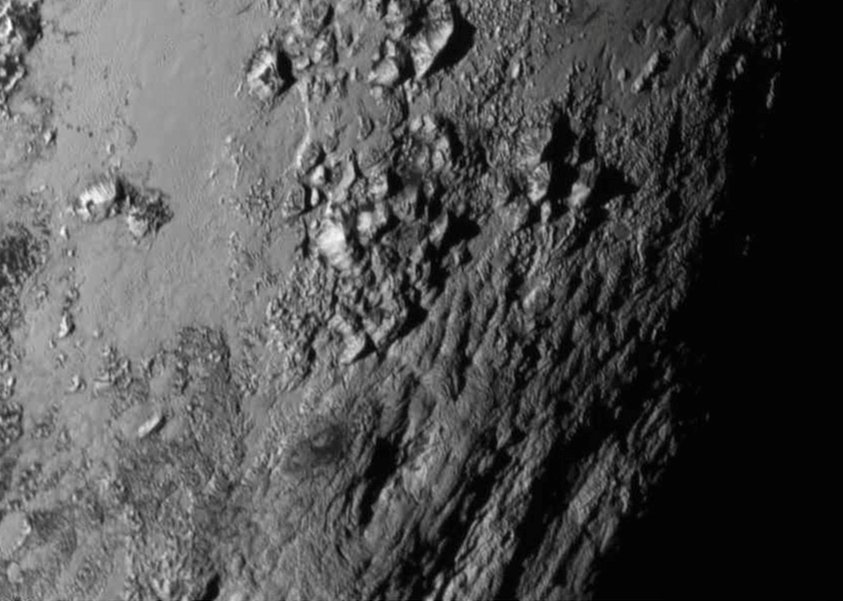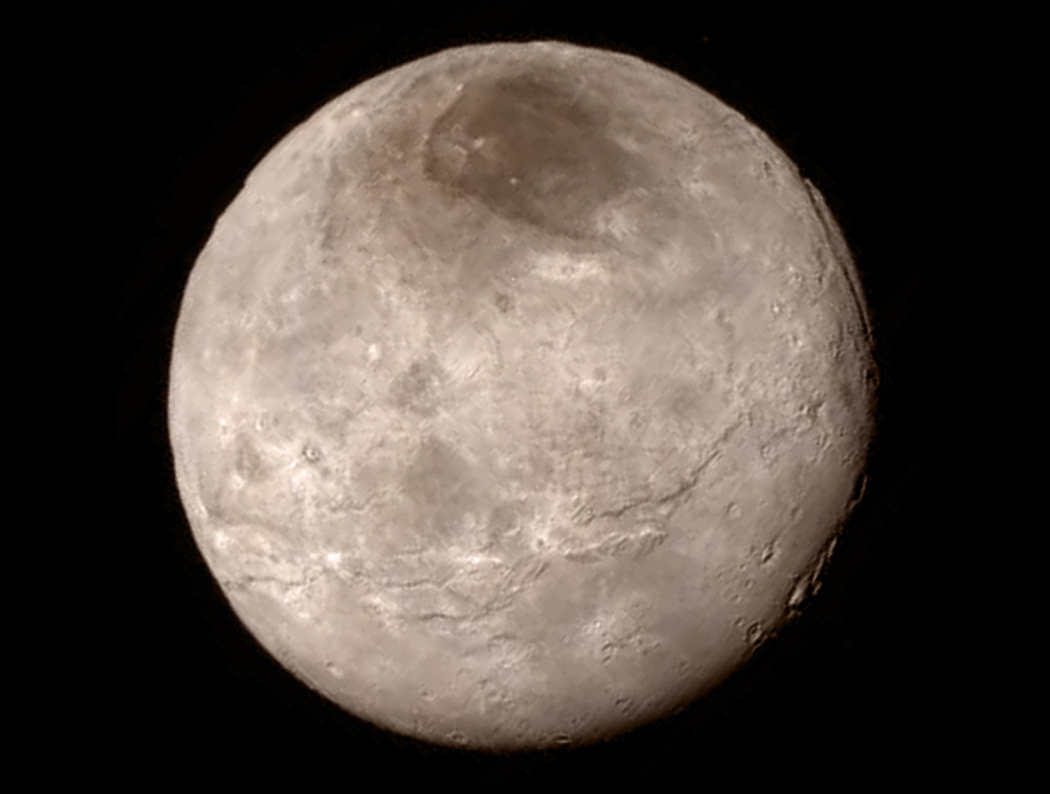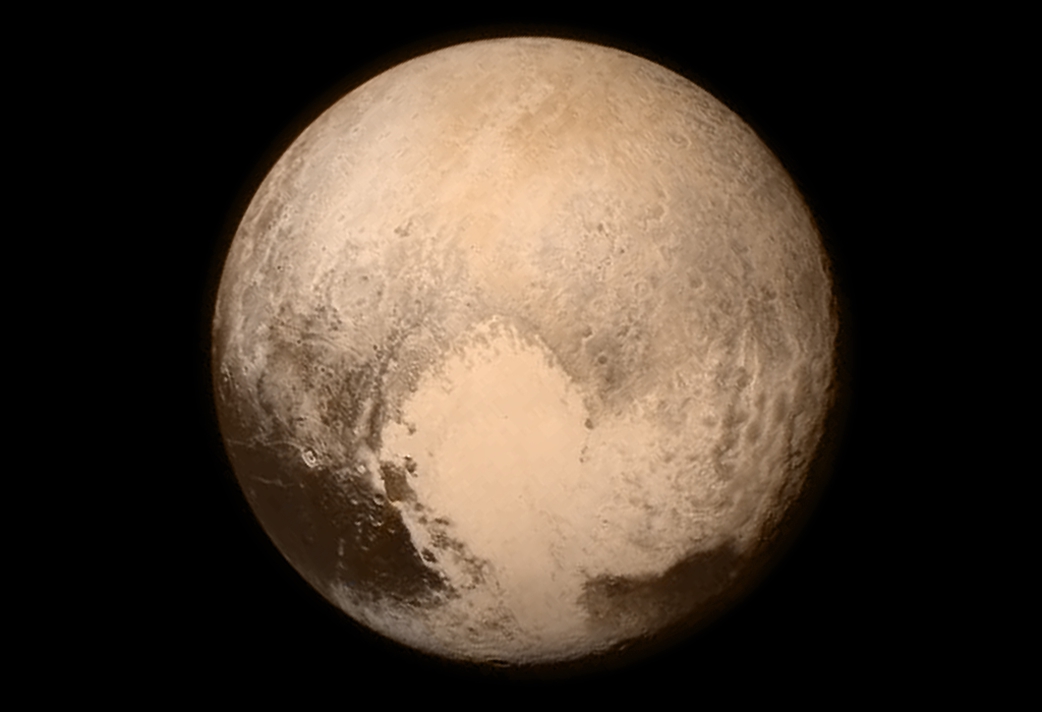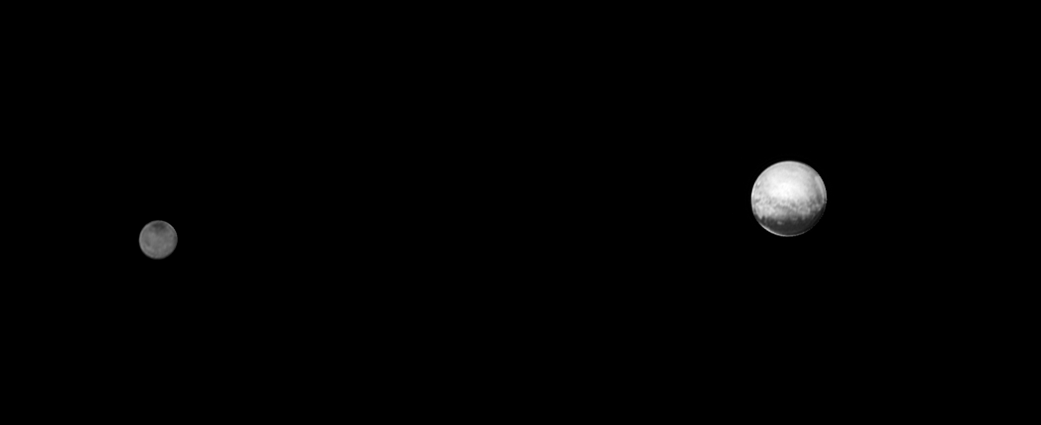How far we’ve come! Three billion miles, to be exact: That’s how far NASA’s New Horizons spacecraft traveled to reach Pluto, making it the first spacecraft ever to visit the dwarf planet (or any ice dwarf planet, although ice dwarfs are much more common in our solar system than true planets, like Jupiter or Earth). Thanks to this latest voyage, we’re now poised to make major progress in our understanding of Pluto.
Pluto science has always progressed more slowly than, say, Mars science. The ice dwarf is small and very far from Earth, so it’s more difficult to learn about than the solar system’s planets. New Horizons is gathering data that will teach astronomers more about the make-up of Pluto’s atmosphere and geology, and offer clues to the planet’s origins.
Meanwhile, the spacecraft has already sent back the most detailed ever photos of the surfaces of Pluto and its moon Charon. Today, NASA released its latest batch, including close-ups detailed enough to show mountains and canyons. Below, we’ve collected some of our favorite New Horizons images. To give you a sense of the history of Pluto science, we’re showing these photos alongside contemporary accounts of Pluto-related discoveries, going as far back as 1930.

1930: ASTRONOMERS FIRST SPOT A PLANET-LIKE OBJECT BEYOND THE ORBIT OF NEPTUNE
“Out in space, four billion miles beyond the globe we live on, a yellowish object, a little larger than the earth, swings in a vast circle about the sun; a frigid little world, bathed in the dim light of perpetual dusk. Its discovery is called the most important event in astronomy in nearly a hundred years.” —Popular Science, June 1930
“‘Pluto’ has been selected by scientists of Lowell observatory here as the name for the recently discovered trans-Neptunian body…. The name is symbolic of the comparatively dark and distant regions through the celestial body rides on its orbit about the sun.” —Associated Press, May 1930

1978: ASTRONOMERS DISCOVER PLUTO HAS A “COMPANION”
“The planet Pluto, named after the Greek god of the underworld, has a companion. A moon, dubbed Charon for another mythological figure, has been discovered orbiting the tiny world.” —Associated Press, June 1978
AROUND 1980: NEWSPAPERS REFLECT ON THE 50TH ANNIVERSARY OF PLUTO’S DISCOVERY
“Although it has been nearly 50 years since its discovery, we know less about Pluto today than we knew about Mars a century ago. Its atmosphere, surface, density and size are not known with any high degree of accuracy.” —Pittsburgh Press, August 1978
“Fifty years after its discovery, Pluto remains the poor relation of the solar system, little understood, seldom seen and never visited.” —New York Times, March 1980

1990S: THE HUBBLE SPACE TELESCOPE RETURNS SOME OF THE FIRST DETAILED IMAGES OF PLUTO’S SURFACE
“New telescopic images of Pluto show that the distant planet is a place of frozen gases, icy polar caps and clusters of bright and dark features that astronomers can’t explain…. [Astronomer Alan Stern] said the images confirm the belief of experts that Pluto is one of the strangest of the nine planets orbiting the sun.” —Associated Press, March 1996
“‘We are finally seeing Pluto as a real object, not just a blotch of light in a telescope,’ Dr. Alan Stern, head of the Southwest Research Institute’s planetary research group in Boulder, Colorado, said after a briefing on Thursday by the National Aeronautics and Space Administration.” —New York Times, March 1996

TODAY: A VISIT TO PLUTO
“These images show that Pluto and Charon are truly complex worlds. There’s a whole lot going on here. Our surface composition team is working as fast as we can to identify the substances in different regions on Pluto and unravel the processes that put them where they are.” —New Horizons scientist Will Grundy, in a statement for NASA
“Wow! My prediction was that we would find something wonderful, and we did. This is proof that good things really do come in small packages.” —New Horizons scientist Alan Stern, in a statement for NASA





